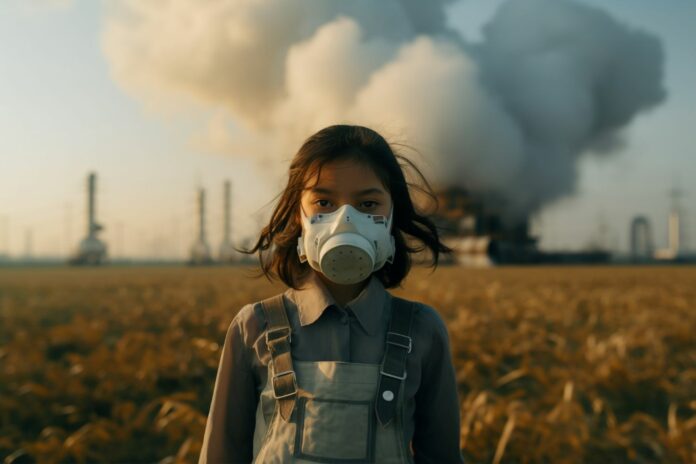Air pollutants that risk human health and the environment are air toxins. While methodological limitations have restricted the amount of air toxics evaluated for their potential links to health and illness, developments in machine learning (ML) allow for assessing a far greater range of environmental exposures.
In a new study, scientists used machine learning methods to conduct a retrospective study to identify combinations of 109 air toxics associated with asthma symptoms among 269 elementary school students.
The data indicates that children’s asthma symptoms may be brought on by exposure to many combinations of harmful air contaminants. The study found that among 269 primary school students in Spokane, Washington, with asthma diagnoses, 25 distinct combinations of air contaminants were linked to asthma symptoms.
Consistent with other studies, the research led by Washington State University demonstrated a socioeconomic divide, with one set of kids from a poorer neighborhood being exposed to more harmful combinations—13 out of 25 found in this study—than other kids from a higher-income neighborhood.
In this study, scientists used the data-crunching power of machine learning techniques to analyze the potential exposure effects of 109 air pollutants and their combinations on asthma outcomes.
Spokane researchers examined air pollution data from the Environmental Protection Agency near ten elementary schools. They also used anonymized school data on student diagnoses and symptoms related to asthma.
The study focused on asthma symptoms recorded before the pandemic lockdowns in 2019 and 2020. It established a connection between these symptoms and air pollution exposure six months, three years, and five years earlier.
During all three exposure periods, a consistent correlation between asthma symptoms and three particular contaminants was discovered.
Among these pollutants are 2, 4- 6 trichlorophenol, a component in insecticides and preservatives, 2-nitropropane, which is present in paints, and 1,1,1 trichloroethane, which was once utilized in household items.
Amiri said, “Some of these air toxics were discontinued in the U.S., but they can still be found in materials that may be in storage or people have in their backyard or garage. Other air toxics still exist, at least in the environment.”
The study’s goal was not to pinpoint particular sources of pollution or the causes of increased exposure in specific communities. For example, living next to a highway or an industrial region may be a contributing factor.
The findings support earlier studies demonstrating that children in lower-income areas frequently encounter increased exposure to air pollutants, pointing to a likely socioeconomic disparity in air pollution exposure.
While the study was conducted in Spokane, related results were found in a different study in New York City, suggesting a broader applicability.
The study’s goal was not to pinpoint particular sources of pollution or the causes of increased exposure in specific communities. For example, living next to a highway or an industrial region may be a contributing factor.
The findings support earlier studies demonstrating that children in lower-income areas frequently encounter increased exposure to air pollutants, pointing to a likely socioeconomic disparity in air pollution exposure.
While the study was conducted in Spokane, related results were found in a different study in New York City, suggesting a wider applicability.
Lead author Solmaz Amiri, a WSU researcher in the Elson S. Floyd College of Medicine, said, “Both in Spokane and New York City, regardless of the setting – how large or small the cities are – these air toxics appear to be influencing asthma among children.”
Journal Reference:
- Solmaz Amiri, Yan Chak Li et al. Machine learning-driven identification of air toxic combinations associated with asthma symptoms among elementary school children in Spokane, Washington, USA. Science of The Total Environment. DOI: 10.1016/j.scitotenv.2024.171102
